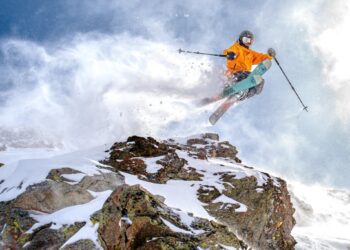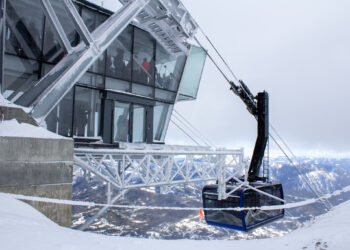By Bella Butler MANAGING EDITOR
HELENA – A committee of Montana lawmakers voted April 5 not to support a ballot initiative that would grant the greatest protection afforded by the state to sections of the Gallatin and Madison rivers.
Passing Initiative 191 with an 8-2 vote, Montana Legislature’s Water Policy Interim Committee members echoed public comment concerns about the proposed measure’s potential impact on various area industries including development, agriculture and tourism, among others. Commenters also asked the committee to heed the undetermined consequences I-191 could have on current and planned conservation work.
The bipartisan committee’s vote not to support I-191’s placement on the ballot will appear on the initiative’s petition, the next stage in the process before being certified for the November ballot.
The ballot initiative would grant outstanding resource water designation to the section of the Madison River between Hebgen and Ennis lakes and the section of the Gallatin River between the Yellowstone National Park boundary and the Spanish Creek confluence.
If successful, the initiative, submitted by Bozeman-based Cottonwood Environmental Law Center, Montana Rivers, and the Gallatin Wildlife Association, would bypass the legislative process for ORW designation, making these roughly 110 river miles the first ever ORW granted outside of Montana surface waters in national parks.
Montana Attorney General Austin Knudsen found the proposed initiative, originally called I-24, “legally deficient” in his review early this year, but the Montana Supreme Court reversed Knudsen’s decision in March, allowing the initiative to advance toward the November ballot with slightly amended language.
I-191 was then sent to the Montana Legislature’s Water Policy Interim Committee, which held a public hearing on the initiative before casting its vote, the first of its kind following an addition to Montana Law passed by the Legislature in 2021.
“I think it’s a good day in Montana where the people that are actually going to be voting on initiatives have the ability to weigh in on that initiative and make it more of a public process than ever before,” said Sen. Jeff Welborn, chair of WPIC.
Four proponents of I-191 spoke during the hearing, three of which were associated with I-191’s submitters: Cottonwood Executive Director John Meyer, GWA President Clint Nagel and GWA board member Nancy Ostlie.
“The secret of Montana is out and people are coming here from all over the world to buy up a piece of heaven,” Meyer said. “And as more and more people come here our rivers are being threatened with pollution. And this is our last opportunity to permanently protect these stretches of the Madison and Gallatin rivers for future generations.”
Meyer argued I-191 is especially necessary following the Legislature’s recent repeal of numeric nutrient standards for certain discharge into state waterways.
Proponents also discussed the need for more protections as area development increases in the greater Big Sky area.
“The petition really asks that the citizens determine whether wealth will take precedence over the health of our environment, and the rapidity of the change and growth that’s occurring that makes this critical in this election cycle,” said Bill Bartlett, the fourth proponent who spoke at the hearing.
To the contrary, many of the 22 people who spoke in opposition to the initiative worry that the it will put a chokehold on nearly all further development in the area.
ORW designation precludes the state from issuing permits for new or increased point-source discharge that would result in permanent changes to water quality. By changing the language of the original ORW designation, I-191 expands this preclusion to include permits that would result not only in permanent changes to water quality but temporary changes as well.
At the time of his legal review, Knudsen also published a fiscal note estimating the ORW designation proposed by I-191 would cost the state more than $60,000 per year. Montana Rep. Llew Jones during the hearing called the note “limited,” pointing to the considerable tax value, including lodging tax, of the Madison and Gallatin regions. Since some of these taxes are exported to other parts of the state, Jones argued that freezing development would impact not only the regional economies but that of the entire state.
Members of the public questioned how any construction could be completed without temporary changes to water quality. Other commenters added that this condition could impact recreational, agricultural, mining and timber activity as well.
“The far-reaching language of prohibiting all temporary water-quality impacts opens the door to endless arguments, essentially blocking any activity that has a nexus to the water body,” said Yellowstone Club Environmental Manager Rich Chandler, who spoke on behalf of Big Sky developer Lone Mountain Land Company. “From the fisherman on the river who kicks up a rock to the field irrigator maintaining their ditches, to the stream restoration projects, they’re all in queue.”
The addition of the word “temporary,” commenters noted, was not defined by the initiative.
“If a cow walks in the water [and] it causes a temporary change in water quality, will that be allowed?” asked Krista Lee Evans, who spoke on behalf of the Association of Gallatin Agricultural Irrigators, the Montana Farm Bureau Federation as well as the Senior Water Rights Coalition.
Conservationists have similar concerns.
“Some of the components of the statute would actually threaten some of the restoration work that we do and the projects that we do within both of these watersheds,” said Clayton Elliott speaking on behalf
of fishery conservation group Trout Unlimited.
Sen. Pat Flowers, who represents Big Sky, added that the designation could create more potential for non-point source nutrient pollution stemming from increased reliance on individual septic systems. This was a concern also raised in a letter from the Big Sky County Water and Sewer District.
Sen. Jill Cohenour said the initiative may have unintended consequences because of its potential to increase non-point source discharge and by blocking current river restoration efforts.
“It drops us off a cliff that we can never recover from,” she said.
In addition, said Sen. Welborn, I-191 would tie the hands of the executive branch and its agencies, including the Montana Department of Environmental Quality.
To the motion of not approving the placement of I-191 on the ballot, two committee members, Rep. Tom France and Rep. Rob Farris-Olson, voted no but did not offer explanation.
As of April 5, I-191 was approved for signature gathering.
















